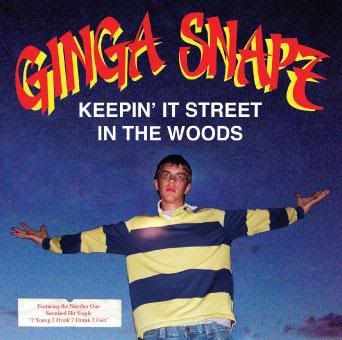
98%
Personal Journals was Sage Francis’ debut proper. As he had released several mix-tapes and debuts earlier in the 21st century, Personal Journals represented a maturation of sorts for him, as most of the tracks contained were written with the intention of being compiled together. This gives Personal Journals an immediate advantage over Sage’s earlier material; whereas mixes like Sick of Waging War were annoyingly jarring and disorderly, Personal Journals benefits from its great flow, and its greater feeling of concentration. But the most noticeable difference between Personal Journals and Sage’s earlier work is the lyrical content. Whereas previous releases featured more conventional hip hop lyrics, the lyrics on Personal Journals, as the title might suggest, are personal and weighted, giving this album a feeling of intimacy that, once more Sage’s earlier work lacks.
Over eighteen tracks Personal Journals features over ten different producers, leading to an extremely diverse collection of beats. Everything from sorrowful guitar chords (on “Specialist”) to sombre string arrangements (on “Personal Journalist”) to Captain Beefheart samples (on “Runaways”) is utilized, making Personal Journals a constantly interesting listen. These beats also help to capture the atmosphere of the album. “Eviction Notice” would be nothing without its plodding, ominous percussion, and "Simon Says"-esque horn section, just as “Smokes & Mirrors” would be nothing without its light synths. Personal Journals also makes great use of hand drums, adding to the uniqueness of this wonderfully eclectic mix.
However, the highlight of the album is Sage himself. He has incredible flow; able to adapt quickly to tempo changes, slowing down and speeding up with ease, but also delivering catchy rhymes while keeping perfect time. But it is what Sage delivers with such great flow that makes Personal Journals so wonderful. Most of the songs on Personal Journals tell stories, often about a significant event or person in Sage’s life. Whether it be about his father’s struggles with alcoholism, his sister’s self-harm, or a sweatshirt he once wore “like a second a layer of skin”, Sage delivers emotional, intelligible, and thought-provoking raps with clear meanings and interesting analyses.
Overall, Personal Journals is a great listen for people who like hip hop, but are often turned off by its normally hedonistic and self-promoting lyrics. Conversely, many will hate it; they will say that Sage has pussified since his earlier work, and might call it a sell-out. I myself love this album: it is my second favourite album of all time.
tl;dr: Eclectic beats, emotional lyrics, great flow. Recommended to all who don't mind hip hop that doesn't sound "tough", and to those who are looking for something different.
Best Songs: “Climb Trees”, “Smoke & Mirrors”, “Specialist”, “Runaways”
~Turkeyballs
1. Crack Pipes
2. Different
3. Personal Journalist
4. Inherited Scars
5. Climb Trees
6. Broken Wings
7. The Strange Famous Mullet Remover
8. Smoke And Mirrors
9. Message Sent
10. Eviction Notice
11. Pitchers of Silence
12. Specialist
13. Hopeless
14. Kill Ya' Momz
15. Black Sweatshirt
16. Cup Of Tea
17. My Name Is Strange
18. Runaways
DOWNLOAD FULL ALBUM















